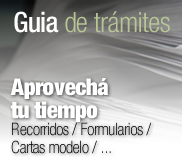Tercer Coloquio bizantino de la UBA
p { margin-bottom: 0.25cm; direction: ltr; color: rgb(0, 0, 0); line-height: 120%; text-align: justify; }p.western { font-family: "Palatino Linotype",serif; font-size: 10pt; }p.cjk { font-family: "Times New Roman",serif; font-size: 10pt; }p.ctl { font-family: "Palatino Linotype",serif; font-size: 10pt; }a:link { color: rgb(0, 0, 255); }a.ctl:link { font-family: "Times New Roman",serif; }
Third Byzantine Colloquium of the University of Buenos Aires
Tercer Coloquio bizantino de la UBA
Narration in Byzantium
Synchronic and Diachronic Narratological Perspectives
La narración en Bizancio
Perspectivas narratológicas sincrónicas y diacrónicas
Sección de Filología medieval – Instituto de Filología clásica
Facultad de Filosofía y Letras
29–30 August 2019
The last years have witnessed a surge of narratological studies focusing on the vast Byzantine literary and artistic production, a recent example being the volume Storytelling in Byzantium. Narratological Approaches to Byzantine Texts and Images (ed. Ch. Messis - M. Mullett - I. Nilsson). Today, Byzantinists apply sophisticated narratological techniques not only to narrative texts, but also to images and, in line with M. Fludernik’s theory, to non-narrative texts. A common language and a shared theoretical framework would be instrumental in making Byzantine narratological studies more unitary, in fostering the transdisciplinary dialogue with other fields of research, such as Classical, Medieval and Renaissance Studies, and in popularizing it among wider audiences
In that context, the present colloquium wishes to provide Byzantinists and specialists in other disciplines with a forum of discussion and reflection on the narratological tools applied to their respective corpora, in order to conceptualize the specificity (or absence thereof) of Byzantine narration, from a synchronic and diachronic point of view, and to compare it, utilizing well-stablished and shared analytical categories, with other literary and artistic productions, contemporary or not
We invite 20-minute papers on any topic pertinent to narrative in Byzantium in the widest sense. Please send your abstract no later than May 31, 2019 to tomas.fernandez@conicet.gov.ar, pablo.a.cavallero@gmail.com and reinhart.ceulemans@kuleuven.be. Abstracts should 1000 characters or less (blank spaces included, but not counting bibliographical references), and should clearly state the hypothesis, goals and (expected) conclusions of the presentation.




